MICHAEL ZELEHOSKI
BOOTH A07
September 22 - 25, 2016
Opening on Wednesday, September 21st
\
STAND A07
22 - 25 septembre 2016
vernissage le mercredi 21 septembre
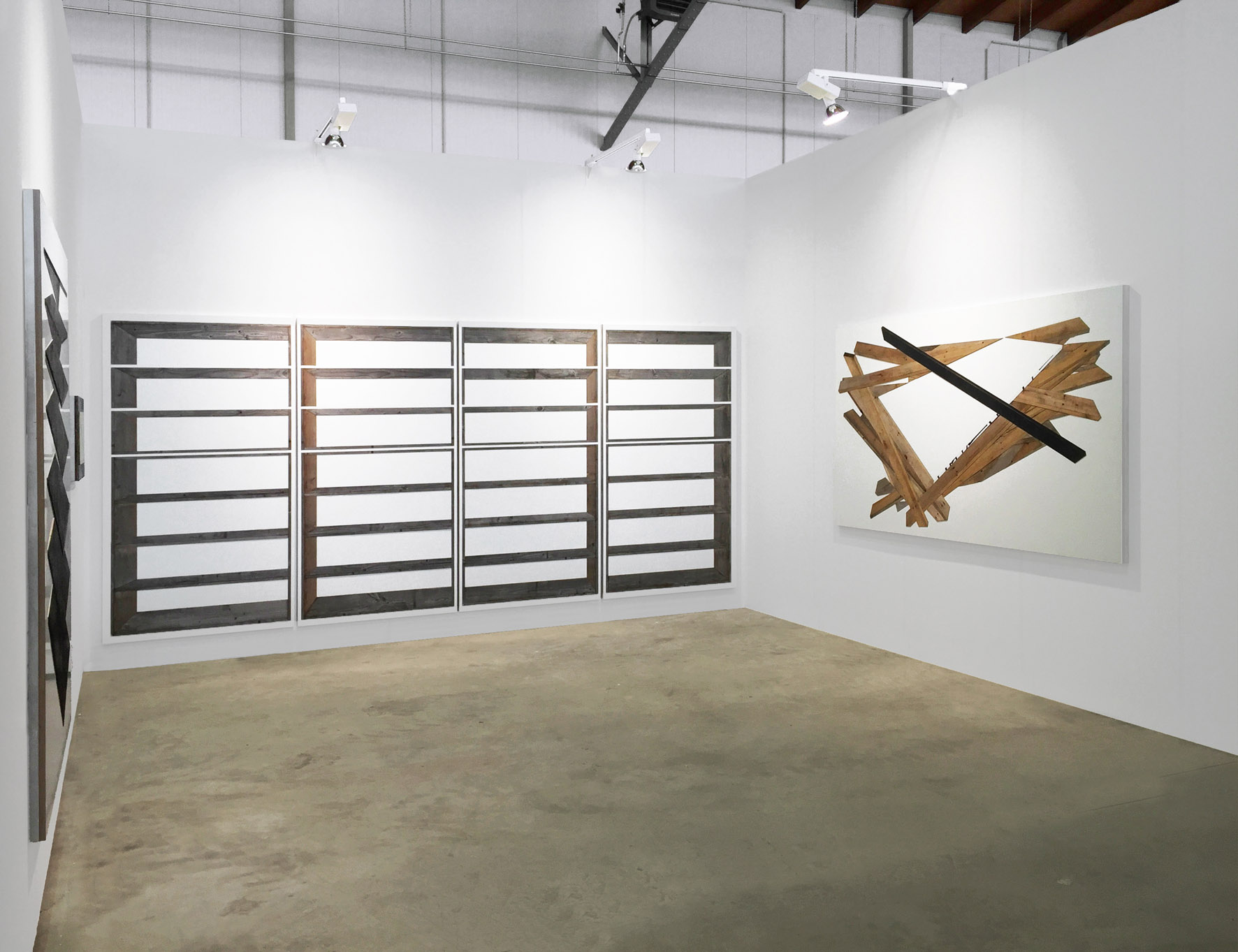
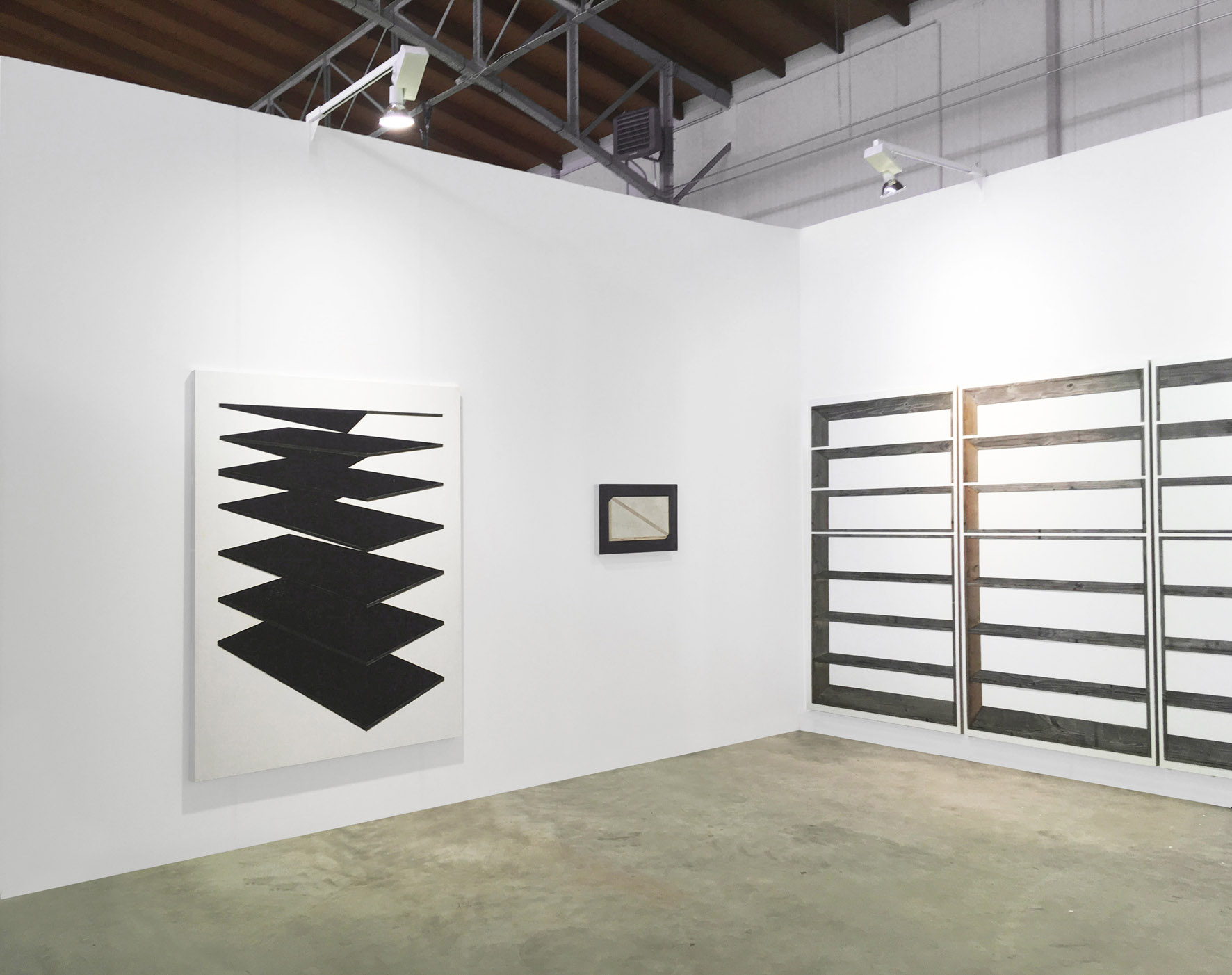
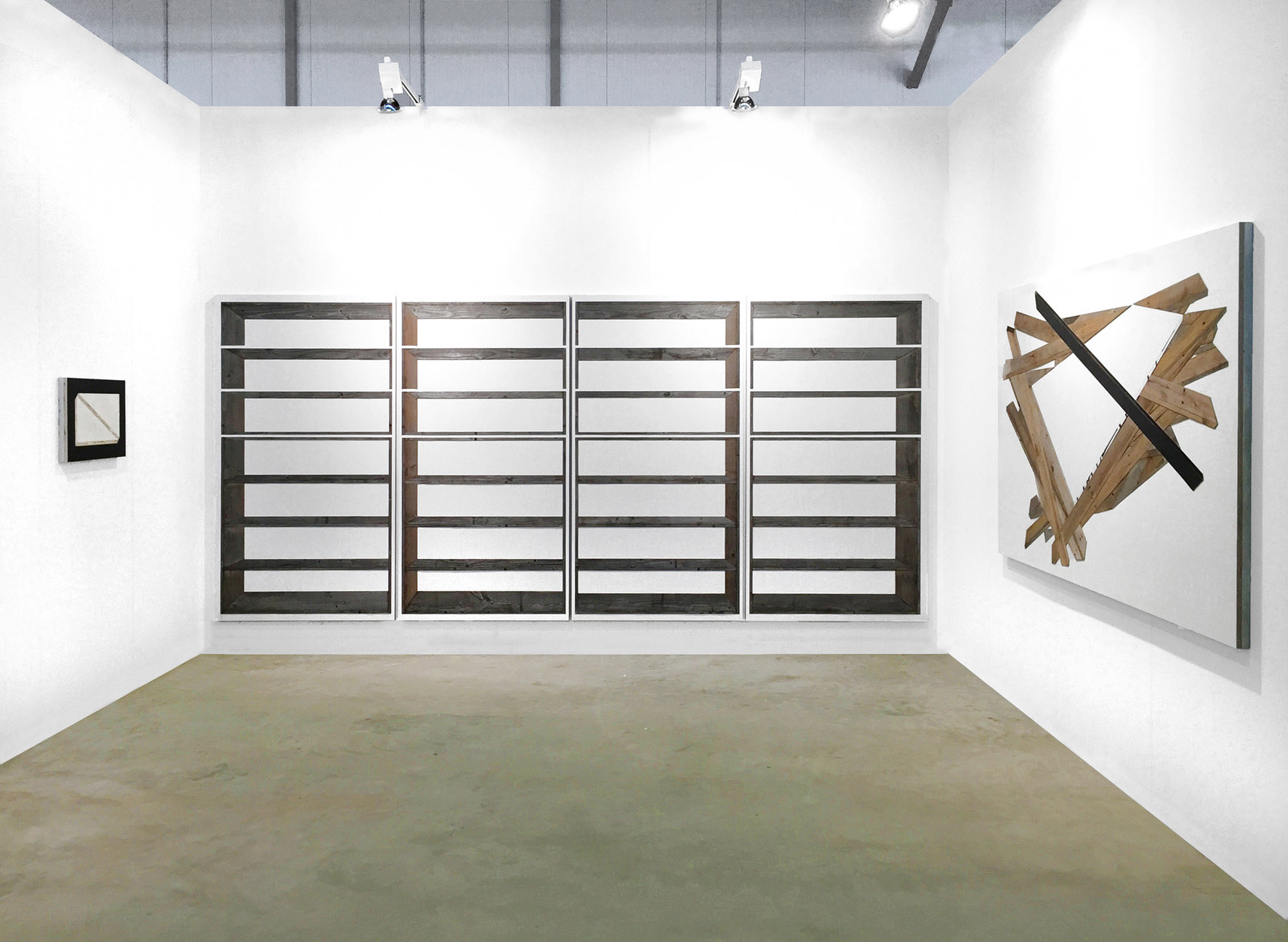

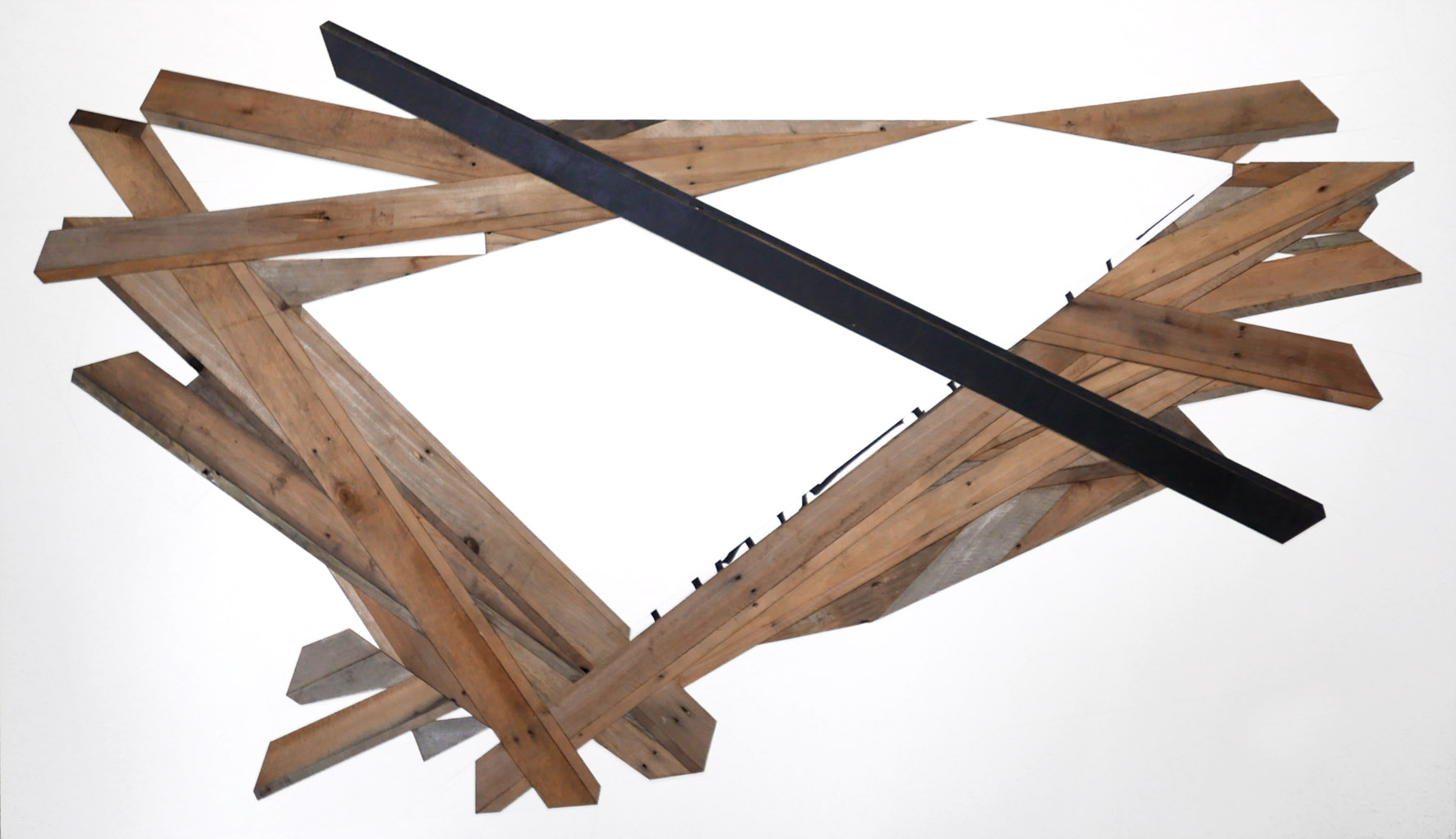
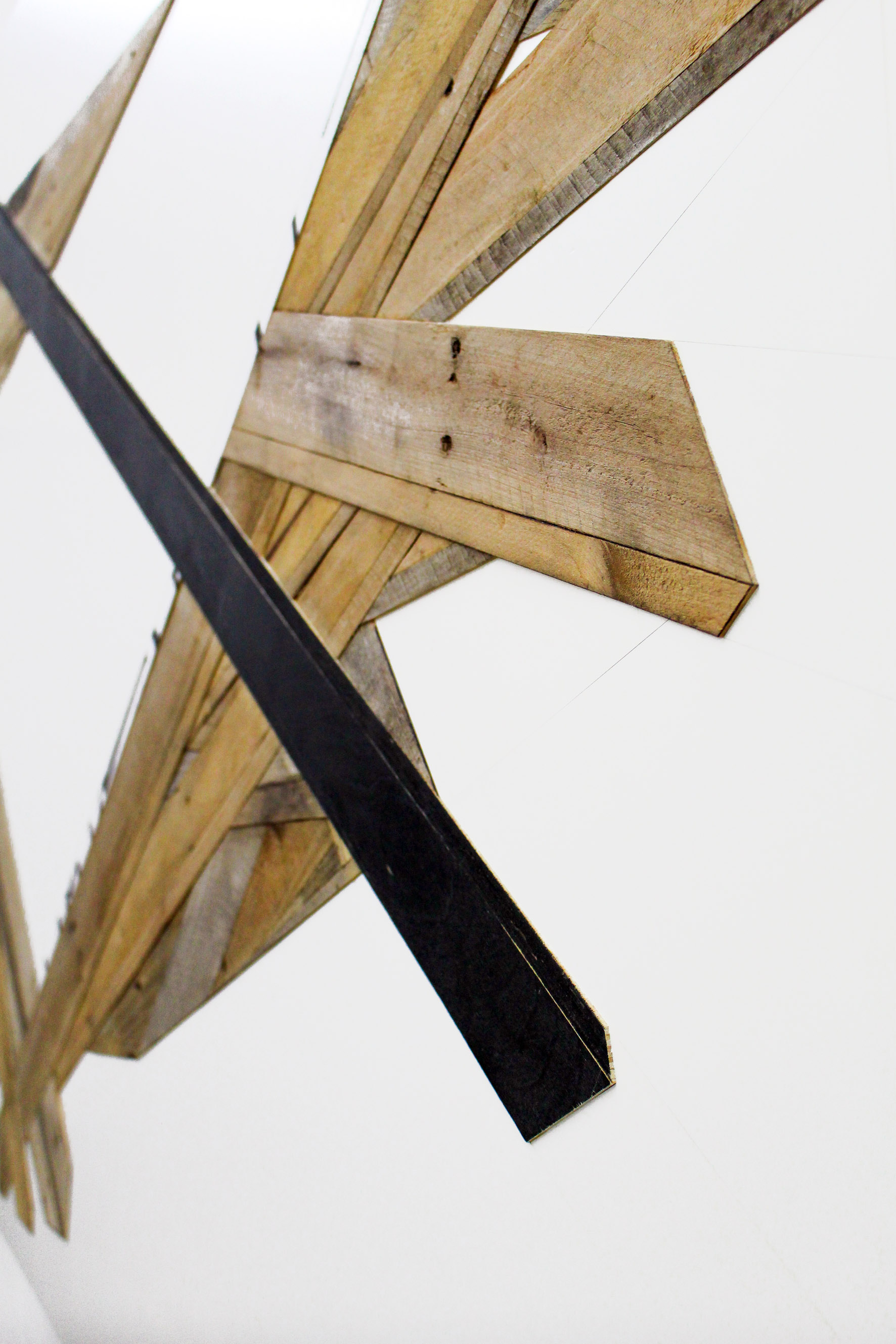
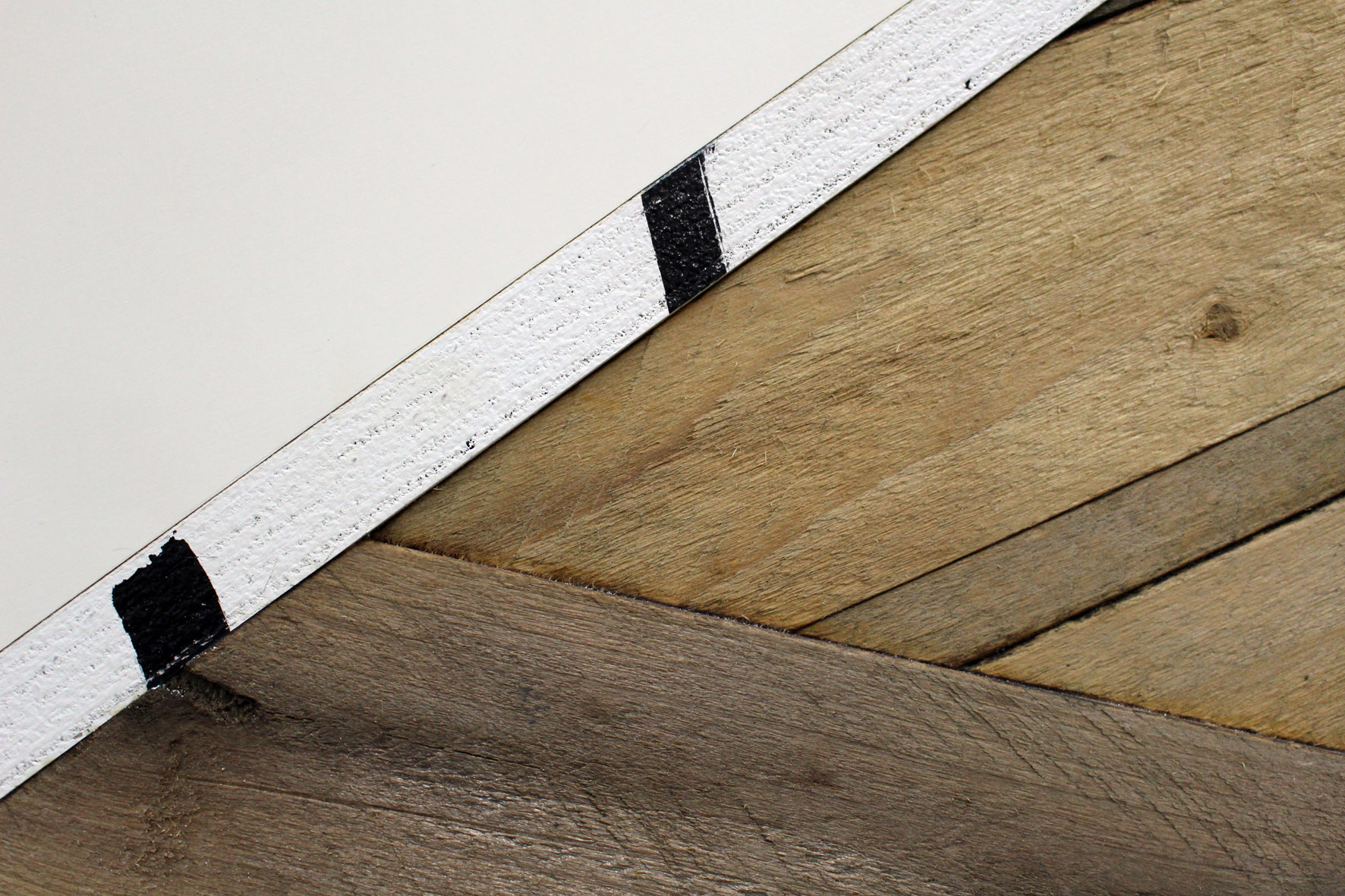
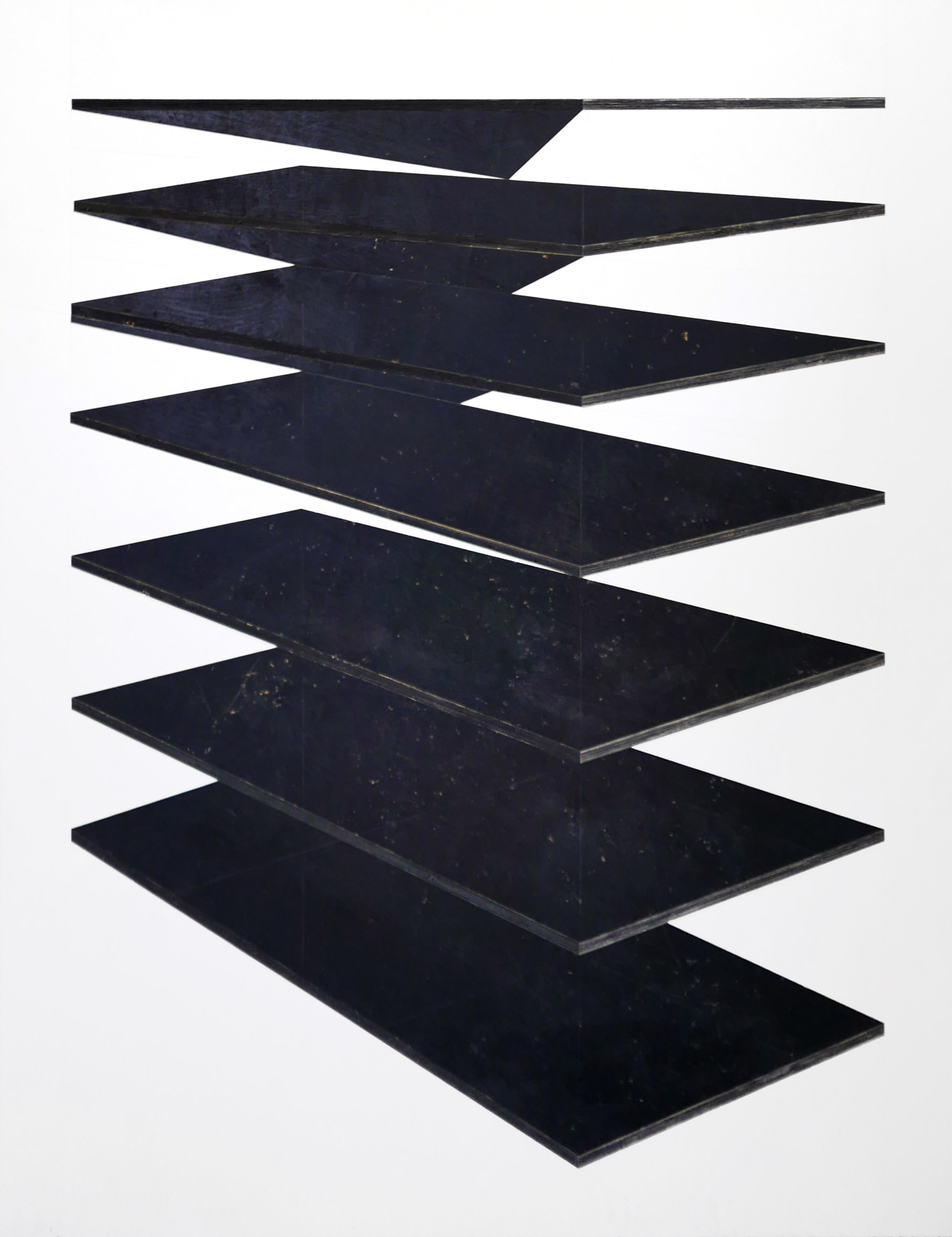

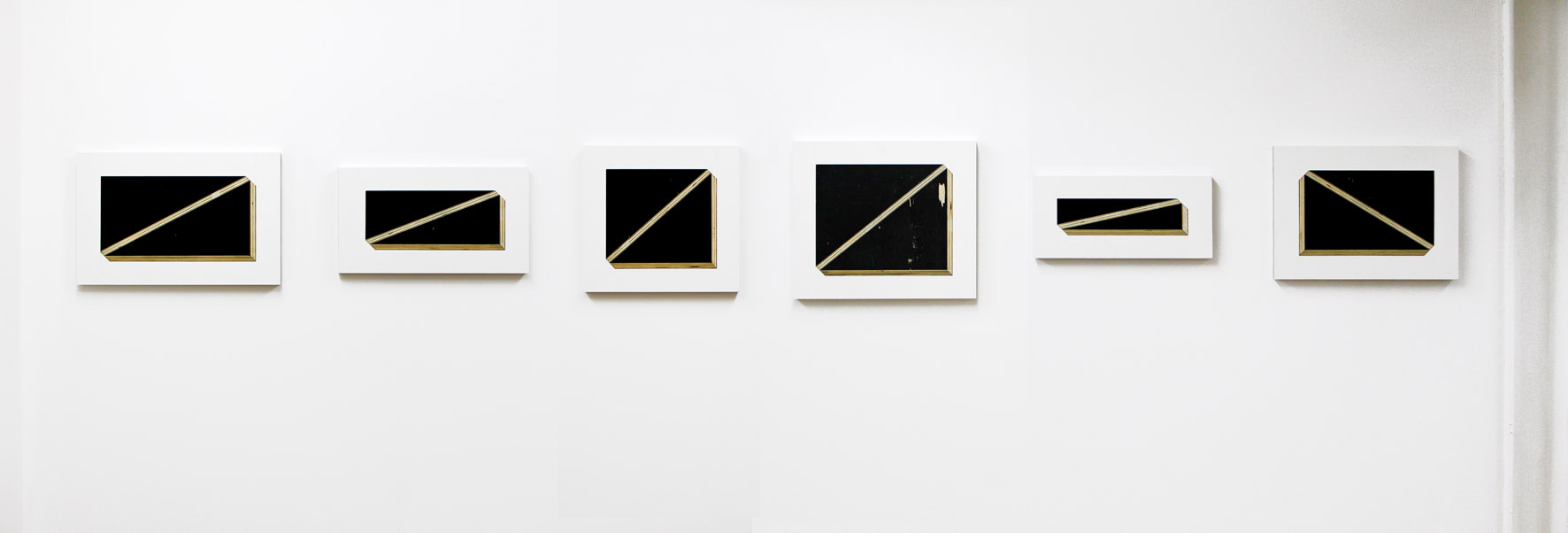
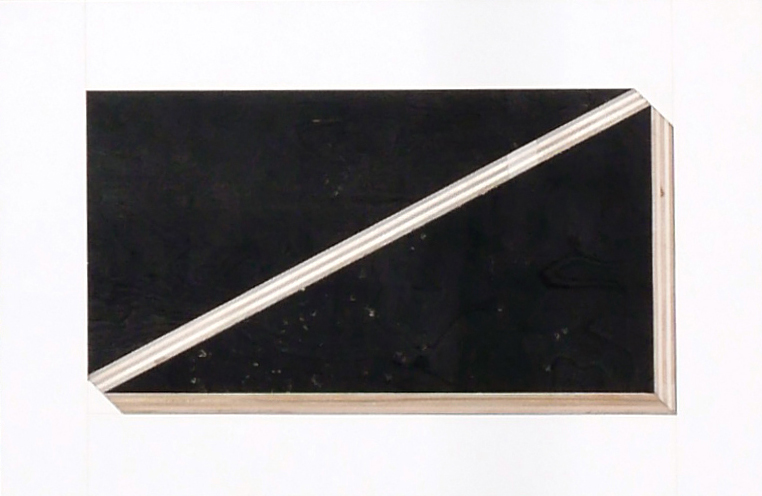
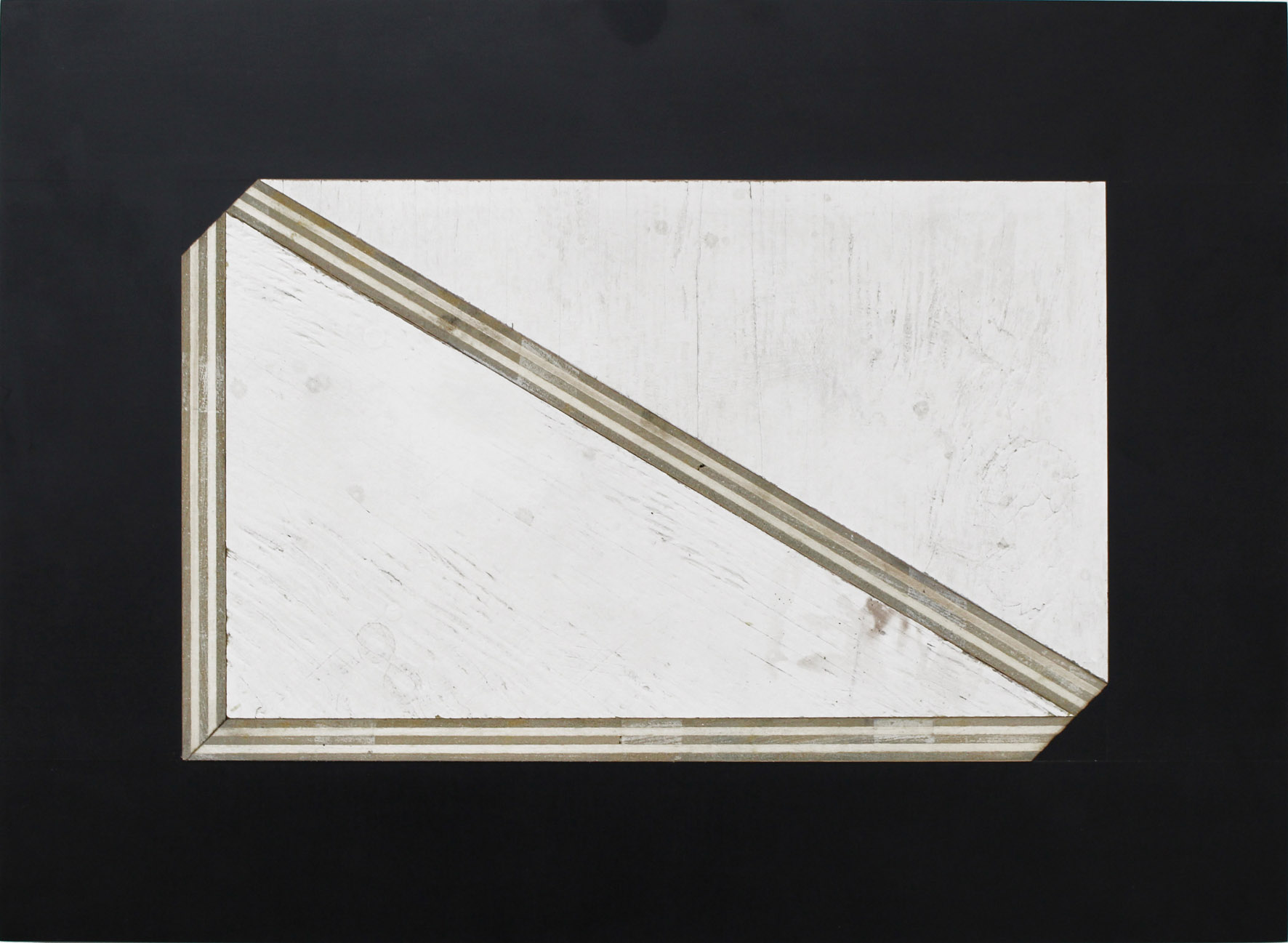
For its first participation to the Reflections section of Vienna Contemporary, Backslash is pleased to present a project with American artist Michael Zelehoski's work, whose monumental installation Open House just entered the collections of the Pompidou Center.
The artist works on the objects he finds in the streets or abandoned houses like the numerous ones in Detroit where he often goes. He dismantles the different stratums of ladders, warning signs or parquet floors, for examples, and then brings them back to life, taking on a new and ingenious perspective while retaining the works' planar forms and causing viewers to question what they are seeing.
The booth will present Athanasia, one large installation of four panels, an evocation of a columbarium that confronts us with the notion of death in architecture or to the architecture for death. Two large scale works give rhythm to the structure of the booth and are completed by a series of small works, hanged on one single line, like the shelves of Donald Judd, a major inspiration in Zelehoski's art.
The act of transformation is a critical component of the artistic process. Its expression is found in Zelehoski’s denial of an object’s original, three-dimensional structure, and his subsequent establishment of the object’s authenticity as both concrete and abstract. In effect, the artist considers the history of the object itself as a primary element in the contemporary experience of his sculpture. The artist’s vernacular and found objects directly engage the domestic and urban environment, and introduce a significant discussion on the nature of relationships among the viewer, the object and the body.
Deeply influenced by his studies at the Universidad Finis Terrae (Santiago de Chile), Michael Zelehoski lived many years in South America and worked there with different major artists, such as Felix Maruenda. Since then, his researches have been strongly marked by Latin American artists.
A constant dialogue between several influences has emerged from this double education: European moderns (including Picasso’s cubist collages and Marcel Duchamp’s ready-mades) and American masters (from the “Combine Paintings” by Robert Rauschenberg to the “Black Paintings” and “Shapes Canvases” by Frank Stella). The conversation also refers to Arte Povera, especially with the importance granted to the “poor materials” found in the streets.
This solo presentation of Zelehoski's work will be the first ever in Austria.
\
Pour sa première participation à la section Reflections de la foire Vienna Contemporary, Backslash est heureuse de présenter un projet autour du travail de l’artiste américain Michael Zelehoski, dont l’installation monumentale "Open House" vient d'entrer dans les collections du Centre Pompidou.
L’artiste travaille à partir d’objets en bois qu’il trouve dans la rue ou dans des maisons abandonnées, comme celles de Detroit où il se rend souvent. Il découpe différentes couches d’échelles, de panneaux de signalisation ou de parquets, par exemple, et leur redonne vie avec une perspective légèrement faussée qui questionne le regard du spectateur.
Le stand présente "Athanasia", une grande installation de 4 panneaux, telle l’évocation d’un columbarium qui nous confronte à l’idée de la représentation de la mort dans l’architecture ou de l’architecture dans la mort. Deux autres grandes oeuvres rythment la structure du stand ainsi qu’une série de pièces plus petites, accrochées en ligne, à la manière de Donald Judd, artiste dont Michael Zelehoski s’inspire fortement.
L’acte de transformation, est un élément critique de son processus artistique. L'expression artistique est marquée par le refus de l’artiste de trouver l’original d’un objet en trois dimensions ainsi que d'établir l’authenticité de l’objet qui se trouve être à la fois concrète et abstraite. En effet, Michael Zelehoski considère l’histoire de l’objet lui-même comme un élément de première importance dans l’expérience de ses œuvres. Les objets trouvés s’engagent directement dans l’environnement domestique et urbain et initient une discussion sur la nature de la relation entre le spectateur, l’objet et le corps.
Fortement influencé par ses études à l’université de Santiago du Chili, Michael Zelehoski a vécu de nombreuses années en Amérique du Sud et y a travaillé avec des artistes majeurs, comme Felix Maruenda. Depuis, ses recherches sont souvent inspirées par les artistes d’Amérique Latine.
Un constant dialogue entre différentes influences a émergé de cette double éducation : les modèles européens (avec les collages cubistes de Pablo Picasso et les Ready-Mades de Marcel Duchamp) et les maîtres américains (avec les "Combine Paintings" de Robert Rauschenberg et les "Shapes Canvases" de Frank Stella, par exemple). L’artiste fait également référence à l’Arte Povera, spécialement dans l’importance qu’il accorde aux « objets pauvres » trouvés dans la rue.
Ce sera la première fois que le travail de Michael Zelehoski sera montré en Autriche.
VIENNA CONTEMPORARY
Marx Halle
Karl-Farkas-Gasse 19
1030 Vienna
Austria
Opening hours:
Thursday, 22 September 2016 : 11:00 am – 7:00 pm
Friday, 23 September 2016 : 11:00 am – 7:00 pm
Saturday, 24 September 2016 : 11:00 am – 6:00 pm
Sunday, 25 September 2016 : 11:00 am – 6:00 pm

